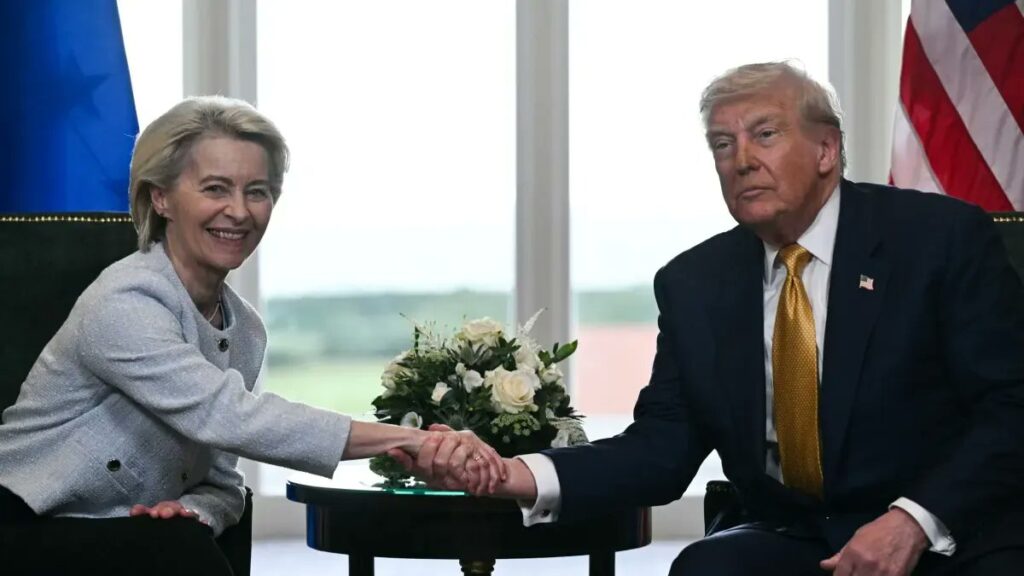The agreement between Donald Trump and Ursula von der Leyen avoids an imminent tariff clash between the United States and the European Union, but it also presents internal challenges for the European economy. The imposition of a fixed 15% tariff on most exports to the U.S. market provides temporary protection for European industry, but falls short of being a victory. Brussels has taken on significant commitments in strategic purchases—particularly in energy—and has excluded critical sectors that will remain vulnerable to commercial pressure.
One of the most immediate effects of the agreement will be felt in the automotive sector, which has temporarily avoided a massive tariff hike but remains under scrutiny. Germany, as the main exporter of vehicles to the U.S., secures a partial truce. However, the exclusion of the pharmaceutical sector from the deal creates uncertainty for countries like Ireland, Belgium, and the Netherlands—key production and export hubs for medicines. Meanwhile, steel and aluminum will continue to face punitive tariffs of 50%, with a clear impact on countries such as Italy, Spain, and Poland.
The EU’s commitment to purchase $750 billion worth of U.S. energy marks a strategic shift with both energy and geopolitical implications. France, Spain, and Germany—each in the midst of an energy transition—will need to rebalance their supply sources to accommodate gas and oil from the United States. This could disrupt decarbonization timelines or spark internal tensions due to the fiscal cost of these purchases. The agreement also strengthens the U.S. position as a structural energy supplier within the European architecture.
From a political standpoint, the deal represents a relative concession of European autonomy in favor of trade stability. Some member states—particularly those most dependent on transatlantic trade, such as Germany, Ireland, and the Netherlands—are breathing a sigh of relief. In contrast, countries with less export capacity but high import exposure—like Greece, Portugal, or Croatia—may perceive imbalances in the new framework, especially if the 15% tariff becomes a long-term fixture.
Overall, the pact between Trump and von der Leyen marks a temporary de-escalation but does not resolve the structural disputes between the two economic powers. The EU avoids an open trade war, but at a strategic cost that forces a rethink of its position on energy, industry, and fiscal policy. The upcoming U.S. elections and the possibility of European Parliament elections in 2026 add a layer of uncertainty to an agreement that, while stabilizing, does not guarantee lasting peace.
